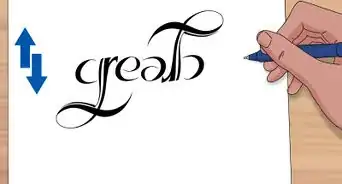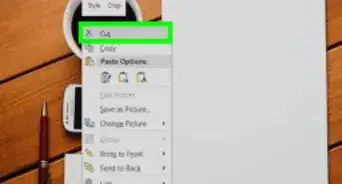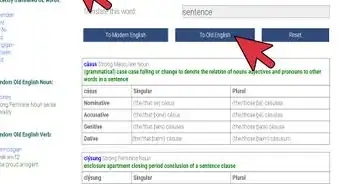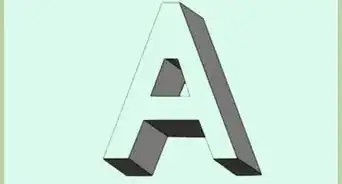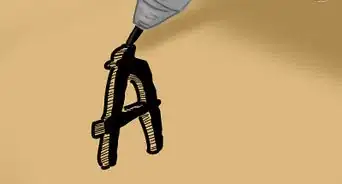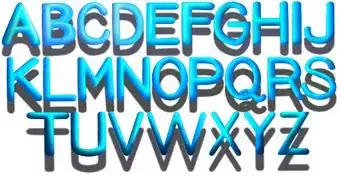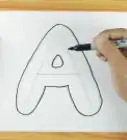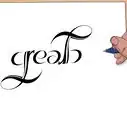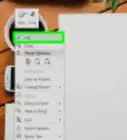This article was co-authored by wikiHow Staff. Our trained team of editors and researchers validate articles for accuracy and comprehensiveness. wikiHow's Content Management Team carefully monitors the work from our editorial staff to ensure that each article is backed by trusted research and meets our high quality standards.
There are 8 references cited in this article, which can be found at the bottom of the page.
wikiHow marks an article as reader-approved once it receives enough positive feedback. This article received 17 testimonials and 80% of readers who voted found it helpful, earning it our reader-approved status.
This article has been viewed 385,274 times.
Learn more...
The & symbol, called ampersand, means “and.” It started as a shorthand for the Latin word “et,” which had the same meaning as the symbol does today. Ampersands are a useful symbol that many find both aesthetically pleasing and faster to write than “and.” However, the ampersand’s curves can be tough to draw, and knowing where to begin is a challenge. With a little practice, you’ll be able to draw an ampersand in your notes quickly and easily.
Steps
Drawing a Standard Ampersand
-
1Put the point of your pen on the baseline. Most people begin their ampersand at the baseline, in order to start at the bottom tail of the symbol. On ruled or lined paper, the baseline is the bottom of the two lines that make up the writing area. You should start just a tiny bit to the right of where you want the symbol to go.[1]
-
2Drag your pen up and to the left to create a diagonal line. Bring the pen up the page to form the almost straight line in the middle of the ampersand. Try to give the line a slight curve that leans left. You can make the ampersand more round by letting your pen curve to the left and then back toward the right, if you prefer that look.[2]
- The ampersand will be about as tall as a capital letter, just under the baseline of the line above.
- For a curved tail at the bottom of an ampersand, put the pen just above the baseline and bring it down and to the left to reach the baseline. Then, bring the pen back up and to the left to form the diagonal.
Advertisement -
3Curve the line around to the right, circling back to cross the diagonal. This will form a small loop at the top by bringing your pencil around to cross the original line. Your pen will cross the diagonal you made, with the intersection of the town being the bottom of the loop. The ampersand at this point will look like the top half of the number ‘8’ with a smaller top loop.[3]
-
4Swoop the line down and to the left in a large ‘C’ shape. The top loop dives down from the diagonal, curving around to the right to make the large loop at the bottom of the symbol. The bottom of this curved line should swipe against the baseline you started on.[4]
- Depending on how you choose to draw this ‘C’ shape, the loop can be wide and angled toward the right, close to the first downstroke and mostly vertical, or some combination of the two.
-
5Connect the bottom of the ‘C’ above the base of the diagonal line. Intersect the diagonal line you started with by bringing the curve up to the line. Make sure you cross the diagonal in the middle of the space between the tip of the bottom tail and the place where the top loop begins, otherwise the ampersand will look lopsided and uneven.[5]
-
6Extend the bottom of the curved ‘C’ line slightly past the diagonal. As you cross the diagonal, continue to drag your pen up, curving slightly upward if you want a curved tail. This creates the top tail of the ampersand. The end of the ‘C’ should extend just a little bit above the first upstroke, no more than the length of the bottom tail.[6]
- You can go further past the diagonal for a more embellished, decorative design.
-
7Cross the end of the top tail for a serif look. Just a single small stroke perpendicular to the tail will work for the serif. In notes or shorthand, you usually won’t need to cross the tail of the ampersand, which extends just past the original diagonal. If you are handwriting a letter or a document others will read, though, you may want to make a serif.[7]
- This line should be short and just visible enough to provide some definition to the end of the line.
- The cross of the original ‘T’ is actually the intersection between the bottom loop and the first upstroke, and not the wide serif some people draw on ampersands.
Making a Calligraphy Ampersand
-
1Begin with a backwards ‘3’ shape or a capital ‘E’ in cursive. Draw the shape from top to bottom, curving the line twice to make 2 open half-circles that intersect in the middle. You can choose whether to have a straight intersection, like in most print ‘3’s, or a loop that appears like an ‘O’ between the two halves.[8]
- Calligraphy ampersands are typically open at the side, based on a capital ‘E,’ rather than a lowercase one, like the standard shape.
-
2Create a loop at the end of the bottom line. Right where your pencil comes up to form the end of the backwards ‘3’ shape, make a loop by curving your pencil to the left and then crossing the line the loop began with. This will make a little loop that extends just past the tip of the original shape.[9]
- For an added calligraphic flair, you can add an open figure-eight or infinity sign by bringing the loop up on the other side of the crossed line and curving downward to make an open loop.
- This stroke creates the crossed ‘T’ of the ampersand.
-
3Make a little loop at the top of the shape. Off the top right tip, you can add a tiny loop by bringing the line down, around, and back up again to cross the original pencil stroke. This is a completely optional stroke, as it will give the ampersand a less formal appearance.[10]
- This loop is great for designs that you want to have a care-free, fun tone.
-
4For a filled-in look, add lines to the inner edges of the main shape. Connect the underside of the top curve to the intersection line between the two half circles, and vice versa for the bottom curve. The line should be slightly curved inward so that it matches the original curve.[11]
-
5Shade the space between the downstrokes, if you drew them. Use your pencil to fill in the gap by repeatedly making shading strokes. The side of a pencil is often better for shading. You should use a pen or marker to make the shading look smoother than pencil strokes.[12]
Community Q&A
-
QuestionWhy is this method necessary?
 Community AnswerThis method uses the proper directional strokes if you are writing calligraphically. If you are not practicing calligraphy, you can really do the steps in any order you like, however, you may find the motions here to be easiest for you to produce a clear and legible "&."
Community AnswerThis method uses the proper directional strokes if you are writing calligraphically. If you are not practicing calligraphy, you can really do the steps in any order you like, however, you may find the motions here to be easiest for you to produce a clear and legible "&." -
QuestionCouldn't I draw an 8, then add lines?
 Community AnswerYou could, but it would be more complicated and not exactly correct.
Community AnswerYou could, but it would be more complicated and not exactly correct. -
QuestionCouldn't I just write "and"?
 ClairoCommunity AnswerYes, but many find it easier/quicker to do &. Also, many find it prettier. Both mean the same.
ClairoCommunity AnswerYes, but many find it easier/quicker to do &. Also, many find it prettier. Both mean the same.
References
- ↑ https://youtu.be/Tjp-ZTK36Vg?t=4
- ↑ https://youtu.be/Tjp-ZTK36Vg?t=6
- ↑ https://youtu.be/Tjp-ZTK36Vg?t=8
- ↑ https://youtu.be/Tjp-ZTK36Vg?t=11
- ↑ https://youtu.be/Tjp-ZTK36Vg?t=15
- ↑ https://youtu.be/Tjp-ZTK36Vg?t=16
- ↑ https://youtu.be/Tjp-ZTK36Vg?t=18
- ↑ https://www.amylattacreations.com/2015/12/basic-hand-lettering-the-ampersand.html
- ↑ https://www.amylattacreations.com/2015/12/basic-hand-lettering-the-ampersand.html
-Step-1-Version-3.webp)
-Step-2-Version-3.webp)
-Step-3-Version-3.webp)
-Step-4-Version-3.webp)
-Step-5-Version-2.webp)
-Step-6-Version-2.webp)
-Step-7.webp)
-Step-8.webp)
-Step-9.webp)
-Step-10.webp)
-Step-11.webp)
-Step-12.webp)
